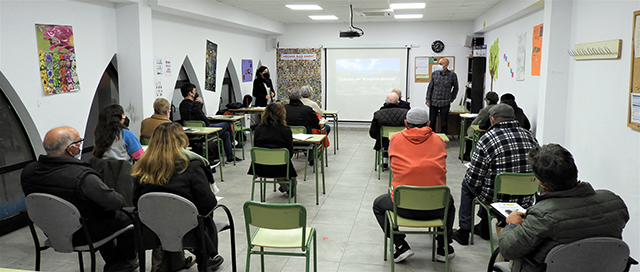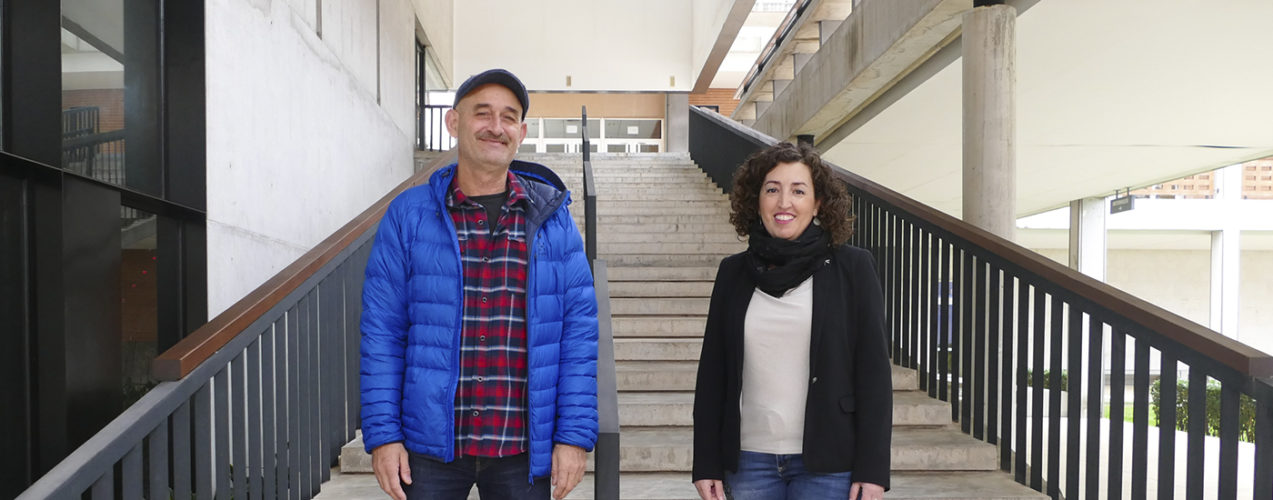The Mediterranean cultural landscape, a typical agroforestry mosaic landscape, has been maintained for millennia through extensive traditional practices. Its chief attribute is the tremendous large-scale spatial heterogeneity that allows for the existence of ecotonal zones with great diversity in flora and fauna, making this landscape one of the foremost “hotspots” in global biodiversity. However, since the second half of the 20th century, the magnitude of the social, economic and cultural changes have caused unprecedented changes in this landscape, and today, the Mediterranean cultural landscape is in clear regression.
The changes that have taken place in the key period of the second half of the 20th century are the subject of study by Virginia Garófano and Rafael Delgado, research staff at Campus Gandia of the Universitat Politècnica de València (UPV) in their recent research on the changes in land cover and use and agricultural abandonment in the county of La Safor from the 1950s to the present. The study was carried out as part of the Environmental Scientific-Technical Research Program of the Confederation of Rural Development Centers (COCEDER) and funded by the Ministry for the Ecological Transition and the Demographic Challenge.
PHOTO INTERPRETATION OF HISTORICAL IMAGES AND ANALYSIS OF DEMOGRAPHIC DATA
The methodology used by the authors, who presented their findings at the Center for Rural Development CDR la Safor (Beniarjó), consisted of a systematic punctual sampling of the land covers uses that were quantified and interpreted over four historical images dating from 1956, 1975, 2000 and 2020. “The intensity of the sampling, with one point every 500 m, has allowed us to evaluate more than 1,700 points throughout the region in order to have a simplified but true view of the chief spatial patterns, as well as the time trends of the defined types of coverage and uses,” point out Garófano and Delgado. In addition, the social changes that have occurred were also analyzed via the growth rate of the different municipalities of La Safor for the entire period of study

FOREST DENSIFICATION, AGRICULTURAL ABANDONMENT AND URBAN GROWTH
The results obtained from the multi-temporal analysis have shown the maintenance of the net area of the forestland but with an increase in the forest cover. This type of cover is becoming increasingly dense and has more biomass, which combined with the drier climate, means a greater danger in the event of a forest fire.
A very remarkable increase in urban uses has also been observed between 2000 and 2020, mainly in the coastal zone. Particularly noteworthy is the great increase in infrastructures, which currently represent 6% of the total number of points sampled on a regional scale and whose trend is growing.
The persistence between categories for the entire study period is of 56%. In other words, almost half of the points evaluated have been transformed into another coverage or land use, which reveals the important changes experienced by the landscape in the Safor comarca over the last seven decades. These changes have been accompanied by a population exodus from inland municipalities to the coast, with the consequent increase in residential development and infrastructure in the coastal area. The municipalities that have shown the greatest decrease in population are Rafelcolfer (-21%), Llocnou de Sant Jeroni (-19%) and Almiserà (-10%), and those with the highest growth rate are Guardamar de la Safor (234%) and Gandia (277%).

Evolution of the Port and Grao de Gandia in the four photo-interpreted images.
NEW TERRITORIAL PARADIGM
Faced with this new territorial paradigm – unprecedented in the history of the Mediterranean basin – where agriculture has ceased to be the main land use structuring area and has been replaced by forests, urgent, transversal and optimized responses are required. These policies need to address the peculiarities of each area to mitigate future attending risks and manage the territorial resources in a sustainable manner.
“The rural exodus, the abandonment of farming and the loss of the Mediterranean cultural landscape have environmental, cultural, economic and social consequences, which translate into a disintegration of the territory, serious sustainability problems and numerous natural risks,” according to the authors of the study.
More information:











